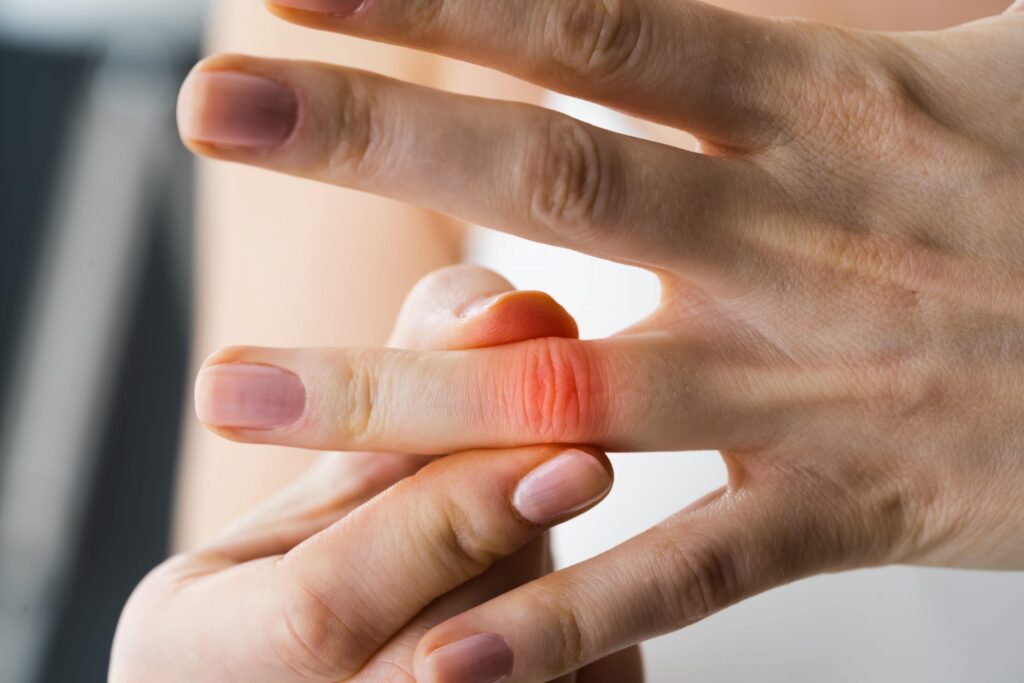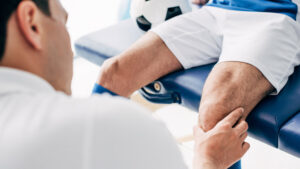Trigger finger, or stenosing tenosynovitis, is a condition where one or more fingers get stuck in a bent position before suddenly straightening, like pulling and releasing a trigger. It often develops due to repetitive hand movements, gripping tasks, or inflammation in the tendons. While it can be uncomfortable, the good news is that simple hand exercises and lifestyle adjustments can help prevent or reduce the risk of developing trigger finger.
Here’s how you can take care of your hands and keep them functioning smoothly.
Hand Exercises to Keep Tendons Flexible
Stretching and strengthening exercises can help maintain flexibility in your fingers and reduce tension in the tendons. Try incorporating these simple movements into your daily routine:
1. Finger Stretches
- Hold your hand out with fingers straight.
- Use your other hand to gently pull each finger back, one at a time, holding for a few seconds.
- Repeat on both hands to improve flexibility.
2. Palm Presses
- Place your palms together in a prayer position.
- Slowly press your palms and fingers against each other, feeling a stretch in your hands and wrists.
- Hold for 10–15 seconds and repeat.
3. Finger Extensions with a Rubber Band
- Place a rubber band around your fingers and thumb.
- Open and close your fingers against the resistance of the band.
- This strengthens the tendons and muscles that control finger movement.
4. Tendon Gliding Exercises
- Start with your fingers extended straight.
- Slowly curl them into a fist, then extend again.
- Perform this movement 10 times to keep the tendons moving smoothly.
Ergonomic Tools to Reduce Strain
Repeated gripping, typing, or handling tools can increase strain on the fingers. Using ergonomic tools can ease pressure on your hands and lower the risk of inflammation.
1. Choose Larger, Cushioned Grips
- Opt for pens, kitchen utensils, or gardening tools with soft, padded grips to reduce finger strain.
- If you regularly use a computer, consider an ergonomic keyboard and mouse that provide wrist support.
2. Use Voice-to-Text Technology
- For those who type frequently, dictation software can help reduce repetitive finger movements and lower strain.
3. Try Occupational Aids
- If you work with your hands, consider using tools designed for people with joint pain or limited grip strength.
- For example, electric can openers and automatic scissors can prevent unnecessary stress on the fingers.
Lifestyle Adjustments for Healthier Hands
1. Take Regular Breaks
- If your work involves repetitive hand movements, take short breaks to stretch and rest your fingers.
- Change positions frequently to avoid prolonged gripping.
2. Apply Heat Therapy
- Warming up the hands before starting tasks can loosen stiff tendons. A warm towel or heating pad can be helpful, especially in the morning.
3. Maintain Hydration and Joint Health
- Drinking enough water and eating foods rich in omega-3 fatty acids (like salmon, flaxseeds, and walnuts) can support overall joint and tendon health.
4. Be Mindful of Overuse
- Avoid excessive gripping or pinching motions.
- If you notice discomfort, modify how you hold or use objects to reduce strain on the affected fingers.
When to Seek Professional Care
If you experience persistent finger stiffness, pain, or locking that doesn’t improve with stretching or rest, it may be time to seek medical advice. Ignoring early symptoms can lead to worsening discomfort and limited movement.
At MASH Spine & Orthopaedics, led by Dr Mohd Mashfiqul Arafin Siddiqui, we provide assessments and treatment options to help manage hand conditions like trigger finger. Whether you need tailored exercises, splinting, or further intervention, we’re here to support your hand health. Get in touch with our clinic to discuss how we can help you maintain pain-free movement in your hands.


















